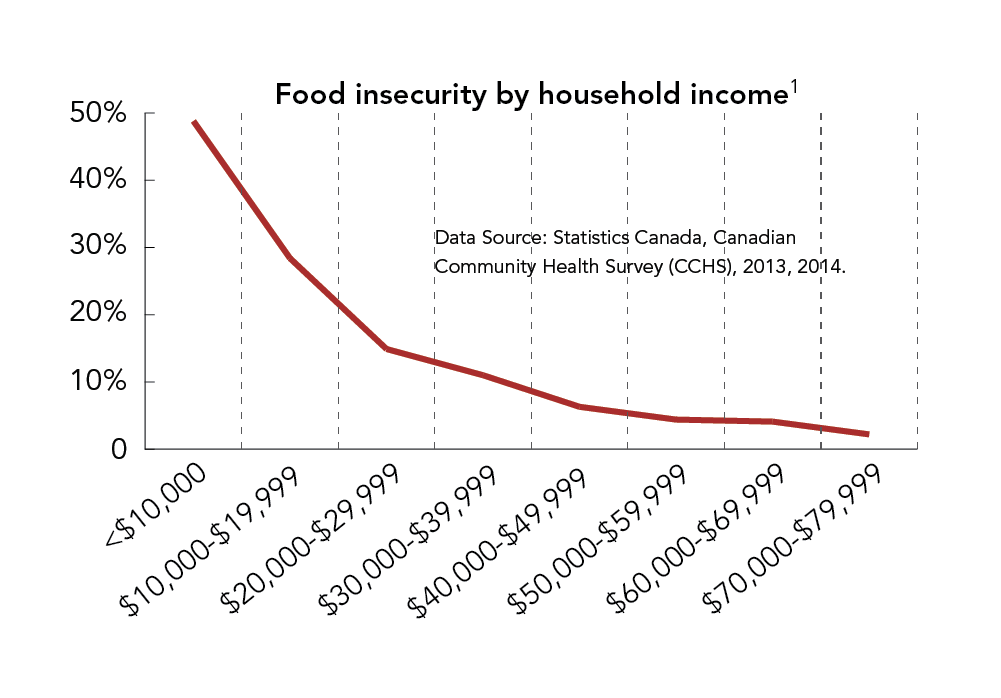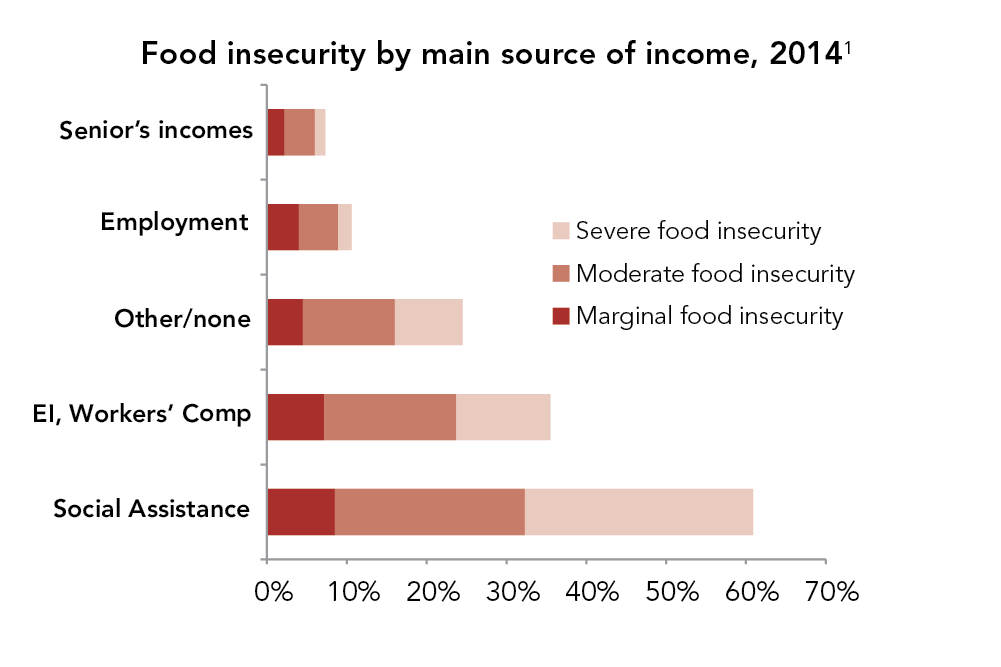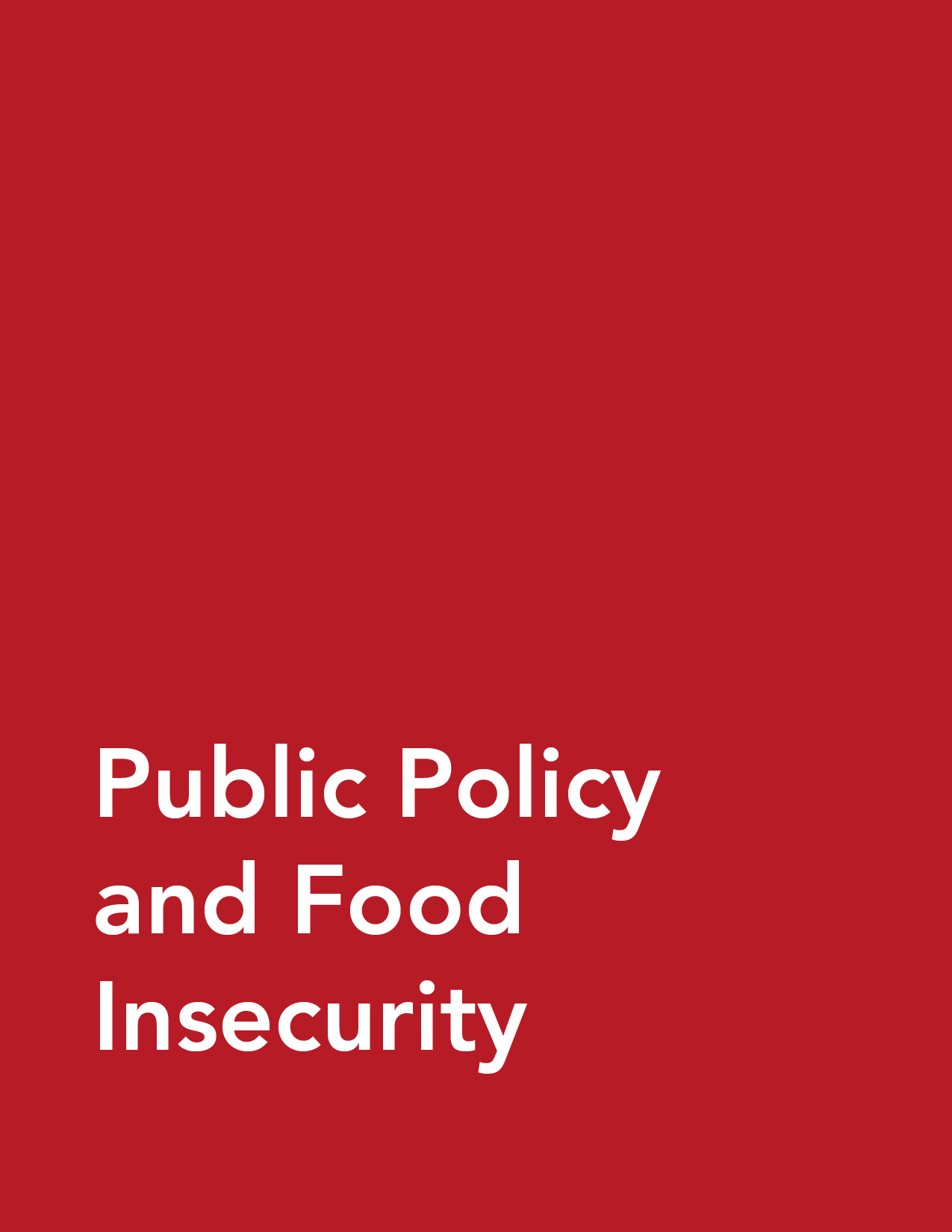Public Policy and Food Insecurity
June 27, 2016
Food insecurity – the inadequate or insecure access to food due to financial constraints – is a serious public health problem in Canada. It negatively impacts physical, mental, and social health, and costs our healthcare system considerably.
Statistics Canada began monitoring food insecurity in 2005 through the Canadian Community Health Survey (CCHS). Since then, food insecurity has persisted across Canada, with over 4 million Canadians living in food insecure households.
Despite discussions and initiatives in some jurisdictions, the reduction of food insecurity rates has not been an explicit goal of public policies in Canada.
Food insecurity is rooted in material deprivation, with low income being the strongest predictor.

Research has demonstrated reductions in food insecurity where social policies have improved the material circumstances of vulnerable households.
The impact of social policy on food insecurity

The low rate of food insecurity among Canadian seniors reflects the protection afforded by the guaranteed annual income they receive. Extending a guaranteed income to all Canadians through a policy like Basic Income could be an effective way to reduce food insecurity across the country.2
Being on social assistance in Canada poses an extremely high risk to food insecurity. Social assistance recipients are more likely than not to be food insecure, suggesting that these programs are not designed in ways that enable recipients to meet their basic needs.1
While many provinces have enacted poverty reduction strategies, Newfoundland and Labrador stands out as a key example of how policy interventions can reduce food insecurity in low income households by improving their material circumstances.
Food insecurity among social assistance recipients in that province dropped by almost half between 2007 and 2012, following the rollout of a new poverty reduction strategy in 2006 that tackled the depth of poverty through interventions like increasing income support rates and indexing rates to inflation.3

References
- Tarasuk, V, Mitchell, A, Dachner, N. (2016). Household food insecurity in Canada, 2014. Toronto: Research to identify policy options to reduce food insecurity (PROOF). Retrieved from http://proof.utoronto.ca
- Emery, J. C., Fleisch, V., & McIntyre, L. (2013). How a guaranteed annual income could put food banks out of business. SPP Research Paper, (6-37). http://www.policyschool.ucalgary.ca/sites/default/files/research/emery-foodbankfinal.pdf
- Loopstra, R., Dachner, N., & Tarasuk, V. (2015). An exploration of the unprecedented decline in the prevalence of household food insecurity in Newfoundland and Labrador, 2007-2012. Canadian Public Policy, 41(3), 191-206. http://www.utpjournals.press/doi/abs/10.3138/cpp.2014-080

